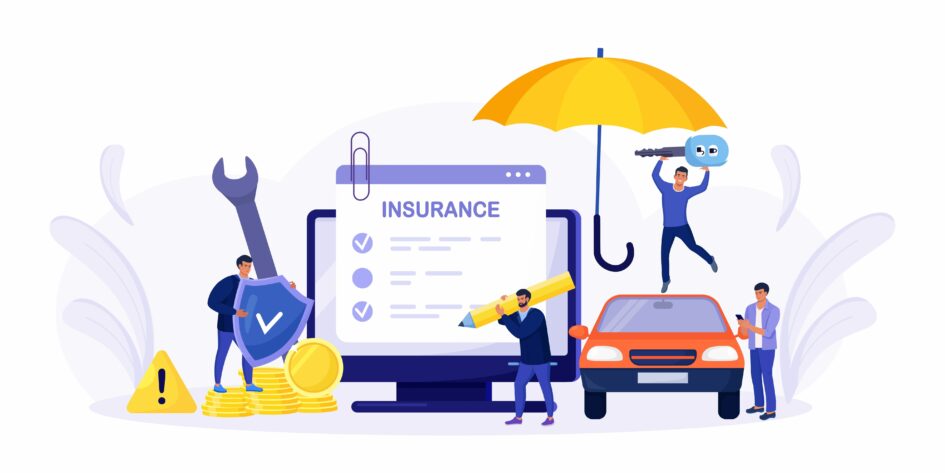Marketing Your Pay-Per-Mile Auto Insurance
As remote work continues, environmental concerns increase, and competition soars, more and more insurance providers are offering pay-per mile auto insurance as an option to their customers. If your insurance brand currently offers or is planning to offer pay-per-mile auto insurance, it’s important to identify your target audience and the best channels and strategies for reaching these target markets. In this article, we summarize 4 key audiences for pay-per-mile, offer auto insurance marketing ideas for each of them, and address obstacles to switching.

Sample Target Markets and How to Reach Them
Learn about the most popular audiences for pay-per-mile auto insurance. For each target market, we provide tips on reaching them effectively.
1. People Who Walk, Bike, or Take Public Transit To Work
People who own cars but don’t drive to work will only use their vehicles for leisure activities and errands. These types of car owners likely live in or near a big city–70% of public transportation commuters live in one of the seven largest cities in the country.
City dwellers who live near their workplace may choose to walk or bike to work. These commuters are often younger– workers aged 16-24 have the highest rate of bicycling or walking to work (6.8% and 1%, respectively).
How To Reach Commuters Who Don’t Drive To Work
Utilize these marketing strategies to best reach car owners who don’t drive to work.
Blog Content
Post blog content that specifically targets those who use alternate methods to commute to work. For Example: “How to Make the Most out of Your Work Commute” or “Health Benefits of Biking to Work.”
Social Media
Since this demographic is primarily younger, it’s important to meet them where they are–on their phones. Be very active on social media and not just Facebook–don’t forget about Instagram and TikTok, too. Consider contests, giveaways, and reels to engage with your audience.
PPC Advertisements
If your insurance company operates nationwide, consider limiting the geo for PPC ads targeting non-car commuters to large US cities. Consumers in the suburbs or small towns will likely find the ads irrelevant, so it’s best to narrow your focus to young city dwellers.
In addition to Google Search and Display campaigns, consider extending your ads to Snapchat, Facebook, and Instagram to reach a younger demographic.

2. Remote Workers
Some workers never returned to the office after the pandemic, while new remote job openings are posted every day. The bottom line is that remote work is alive and well. A study from WFH Research states that 27% of paid full-time workdays were worked from home in early 2023. Remote and hybrid work combined make up 40% of the US workforce.
The Small Business Administration (SBA) reports that 60.1% of all firms without paid employees (“nonemployer” businesses) are home-based. This indicates that the population of remote workers are disproportionately small business owners and solopreneurs.
How To Reach People Who WFH
Utilize these marketing strategies to best reach car owners who don’t drive to work.
Blog Content
Include a section on your blog for entrepreneurs and small business owners. For example: “How to Prepare Your Small Business for a Recession” or “Insurance Tips for Sole Proprietorships.”
Write blog articles about remote work and the concerns of work-from-home employees. Good topics could include “Health Benefits of Work from Home”, “How to Stay Productive as a Remote Worker,” etc.
Social Media
LinkedIn is a great platform for marketing to entrepreneurs and remote workers. Stay active on this platform, sharing and engaging with others’ content, and publish your own posts regularly.
PPC Advertisements
In addition to Google Search and Google Display ads, consider LinkedIn ads. You can specifically target individuals who are entrepreneurs and remote workers within the context of the LinkedIn ads network.

3. Car Leasers
Drivers who lease their car are subject to annual mileage restrictions (typically 10,000-15,000), making them good candidates for pay-per-mile auto insurance. Currently, the largest generation of car leasers is millennials. So, it’s important to tailor your marketing efforts to a younger demographic.
How To Reach Drivers Who Lease
Utilize these marketing strategies to best reach drivers who lease their vehicle.
Blog Content
Create blog content specifically for leasers. For example: “Tips on Avoiding out of Pocket Costs on Lease Returns” or “Top 5 Car Leasing Strategies” to attract this audience to your website.
Social Media
Since leasers are statistically younger (millennials), being active on social media (Facebook, Instagram, TikTok, Twitter, LinkedIn) is imperative.
Share your blog posts among your social media platforms for further reach.
PPC Advertisements
Similar to public transit commuters, consider extending your PPC ads to Snapchat, Facebook, and Instagram.

4. Retirees
Many consumers in the older demographic limit the frequency of their driving as part of the lifestyle change in retirement. For one thing, they are not commuting to work every day. Retirees may also self- regulate the amount of time spent on the road for safety concerns (i.e. avoiding highways or not driving at night or in stormy weather conditions).
How To Reach Retirees
Utilize these marketing strategies to best reach retiree drivers.
Blog Content
Create blog content specifically for retirees. For example: “How Retirees Can Alter Their Insurance Plans to Save Money.”
Social Media
Facebook is overwhelmingly the largest platform for consumers over 50. According to Pew Research Center, 73% of people aged 50-64 use Facebook, and 50% of people aged 65+ use Facebook. Ensure you are active on this platform.
PPC Advertisements
Restrict the age range in these PPC advertisements to 50+. Deploy frequent Facebook ad campaigns. For Google Display ads, use specific placements in your targeting. Place your display ads specifically on websites frequently viewed by retirees, such as AARP, Medicade, and news stations. Check out this HumanGood article on the Top 22 Best Websites for Seniors in 2023 for more ideas.

Addressing Consumer Concerns
When marketing pay-per-mile auto insurance, it’s important to address and respond to consumers’ concerns in the content you produce.
Data Tracking
Be transparent about the type of data you collect and how and when you collect it. The more you disclose, the more trust you will build with your customers.
Include an option for customers who don’t feel comfortable with their data being tracked. You could also have a telematics opt-out option in which the customer can send a photo of their odometer on a monthly basis. Make this option clear and apparent so consumers are aware that they don’t need to share their data if they don’t feel comfortable doing so.
Switching Costs
Consumers may be wary of switching from traditional auto insurance to pay-per-mile, whether it’s with the same insurance company or a new one. Make the process as easy as possible to understand and assign a designated (human) representative who can walk customers through the process so they feel supported.
Highlight the potential savings customers can realize with switching costs. For example, people who switch to pay-per-mile auto insurance could save an average of $900/year. It’s also a good idea to have a pay-per-mile auto insurance cost calculator on your website so consumers can easily test the benefits for their specific situation.

PrintMail can help you grow your insurance agency!
PrintMail has been a trusted innovator for more than 20 years. Partner with us for all your insurance customer communications. We can help you grow your insurance agency with effecient and secure statement delivery, digital marketing, mail marketing, and more. Find more insurance marketing ideas on our blog and contact us to learn more!
